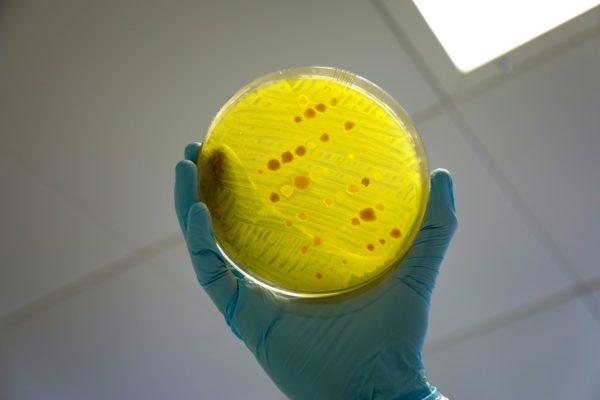
Rise in demand for chicken meat is increasing the risk of antimicrobial resistance
Published on 29/09/2022

DFID-Will Crowne
 This blog focuses on the ZOODLE word ‘AMR’.
This blog focuses on the ZOODLE word ‘AMR’.
Poultry production in low- and middle-income countries (LMICs) is a major contributor to food security and supporting the livelihoods of local people. In Bangladesh, poultry meat production has doubled over the past 20 years. Ease of intensification and rising demand for animal products mean that poultry production is likely to further expand – and rapidly – in the near future.
This though comes with an associated increase in antimicrobial usage (AMU). Antimicrobials are widely used in commercial poultry in Bangladesh and other developing countries to treat and prevent bacterial and protozoal infections and diseases. They are also sometimes used as a prophylactic (to prevent disease) or as a growth promoter.
Food safety risk
Livestock owners are often enticed into using antibiotics by abundant promotional advertisements from pharmaceutical companies. Often, they do not fully understand the advertisements, and they end up using antibiotics injudiciously.
Unfortunately, little is currently known about AMU practices in poultry production systems in Bangladesh, particularly in small to medium-scale commercial and backyard enterprises. In many LMICs, including in Bangladesh, antimicrobials are easily available over the counter without veterinary supervision, but the extent of this usage is also unknown.
Assessing this, and factors influencing usage, is crucial. Misuse of antimicrobials in poultry production poses food safety risks such as the presence of antimicrobial residues in meat and the occurrence of antimicrobial resistance (AMR) in commensal and foodborne pathogenic bacteria.
What is AMR?
AMR is related to strains of micro-organisms (e.g. bacteria) that can multiply in the presence of concentrations of antimicrobial compounds (such as antibiotics) even higher than those given as therapeutic doses. When a bacterium is resistant to only one drug the process is termed single drug resistance, while simultaneous resistance to two or more drugs is called multidrug resistance (MDR).
Antimicrobials, including amoxicillin, ampicillin, ciprofloxacin, colistin, doxycycline, erythromycin, enrofloxacin, gentamycin, kanamycin, neomycin, nitrofurantoin, oxytetracycline and penicillin–G, pefloxacin, streptomycin and sulfamethoxazole, are frequently used by poultry farmers in Bangladesh. The most common resistances among E. coli isolates have been observed against tetracycline (45.5%), trimethoprim-sulphathiazole (26.7%), nalidixic acid (25.7%), ampicillin (25.7%) and streptomycin (20.8%). Resistance to ciprofloxacin (12.9%), chloramphenicol (8.9%), nitrofurantoin (2%), and gentamicin (2%) has also been observed from large and small-scale poultry farms of Bangladesh .
The high level of antibiotic resistance in avian pathogens from Bangladesh is worrisome and indicates that the widespread use of antibiotics as feed additives for growth promotion and disease prevention could have negative adverse implications for the health of people, animals and the environment.
Disease treatment
For therapeutic and preventive management of bacterial diseases, poultry farmers cannot always seek veterinary advice for drug choice and farm management. They also rely heavily on feed and drug sellers and biomedical suppliers, as well as experienced and educated neighbouring farmers, for choosing drugs against different poultry diseases.
Sometimes, they make their own judgments to select therapeutic management for these diseases.
Moreover, diagnosis of diseases in poultry is broadly based on less sensitive clinical signs and symptoms, along with post-mortem lesions – and therefore misdiagnoses and the wrong selection of antimicrobials occur frequently.
All these factors point towards antimicrobials being used indiscriminately with non-specific drugs and doses as well as incomplete courses of drug treatment against bacterial diseases in commercial poultry. Consequently, antimicrobials randomly become resistant.
These resistant microbes may function as a potential source in the transportation of AMR to human pathogens. AMR in human pathogens, including MDR bacteria , is already a serious issue.
Public health threat
Antimicrobial susceptibility testing is neither a common or a routine practice to identify sensitive drugs against different bacterial pathogens in the poultry sector in Bangladesh. As a result, there is no strategy in place to deal with the emergence of AMR against bacterial pathogens in poultry.
Therefore, the irrational use of antimicrobials in human health, animal health and the environment is aggravating the situation and ultimately posing a threat to public health. The World Health Organization has declared AMR one of the top 10 global public health threats facing humanity.
To address this threat comprehensively, multisectoral and multi-stakeholder efforts are needed, based on the One Health approach. Awareness of the problem across the range of stakeholders, including farmers. Traders, poultry industry professionals and others, is required. Policymakers also need to build up and immediately enforce the regulatory regime.

